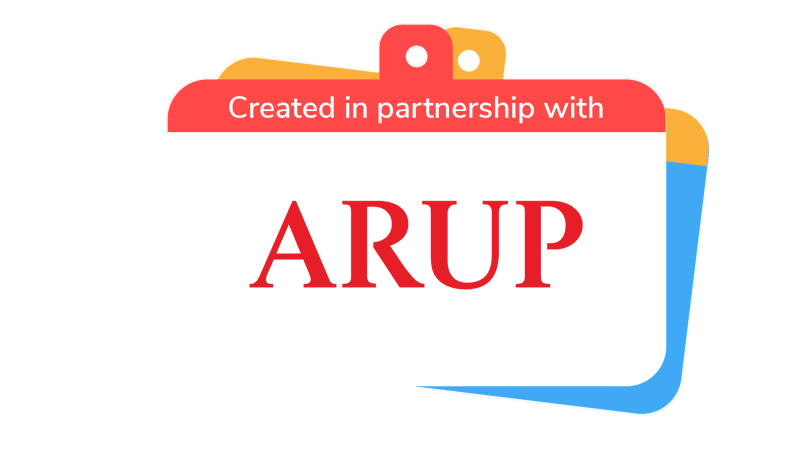
Pioneering ballista
You’ll need
- Rope for lashings and guy lines
- 4 stakes to anchor the finished ballista
- 4 large pioneering poles for A-frames
- 7 medium pioneering poles for A-frame, bracing, movement and firing pole
- A piece of drainpipe, big enough to fit over one of the medium poles
- A colander or a sieve with a handle
- Something soft to fire in your catapult, such as bean bags or water balloons
- Step ladder (optional)
Before you begin
- Use the safety checklist to help you plan and risk assess your activity. Additional help to carry out your risk assessment, including examples can be found here. Don’t forget to make sure all young people and adults involved in the activity know how to take part safely.
- Have a read of the guidance for pioneering page for any information on large scale pioneering.
Staying safe while pioneering
- Try to scale the project to those building it. Nothing should be too heavy for one person to lift and use safely.
- You could have a go at making this with smaller poles, such as broom handles, first to practise your techniques.
- Make sure everyone has sturdy, closed toe shoes on
- Make sure that the ground you’re building your ballista on is steady, level and presents no other hazards.
- Use the attached assembly instructions for a visual explanation of the project (coming soon).
- This activity uses lots of lashings. You should consider having a session before this one to learn or practise your sheer lashings, diagonal lashings and square lashings.
Build your ballista
- Gather everyone in a group. Tell them that, as a group or in small groups, they’ll be making a ballista.
- Explain that a ballista is an ancient weapon, a bit like a catapult, that launched things at a distant target.
- As a group, with an adult volunteer, start making two A-frames.
- To do this, start by taking two large poles and tie them together with a sheer lashing on one end. This’ll be the top of one frame.
- Pull the bottom of these two poles apart, so there’s a large space between them and it creates a triangular shape.
- Use a diagonal or square lashing, lash a medium pole across the lower half of these two poles to create the ‘A’ shape and to provide support. It’s important to make sure the lashings are firm, so that they don’t come undone while the ballista is being used. Remember to keep the rope tight as you create the lashing for the best results and help from a friend always makes this easier.
- Make a second A-frame in the same way. Once it’s complete, check that both A-frames are the same size and shape. You can do this by standing them up, side by side, and comparing them. Adjust them as needed, so they’re the same size and shape, before moving on.
- Connect the two A-frames together, using three medium poles. Make sure the A-frames are a good distance apart, just under the length of one pole. The poles need to go as follows:
- Two poles connecting the A-frames together. One pole will go on each side of the A-frame. The two connecting poles should rest on the horizontal poles of the A frames to create braces, then be lashed to the main A-frame firmly.
- One pole needs to be roughly halfway up one side of the A-frames to act as a stopping pole. This should be on the front of your ballista.
- Attach three guy-lines (or guywires or guy-ropes) to the top of each A-frame.
- Hammer four stakes in the ground at 45-degree angle around where the ballista will stand. Using a round turn and two half hitches attach the rope to the stakes, making sure they’re nice and tight. These will help to stop the ballista tipping over when fired, so they’ll need to be firm and the guy-lines securing them should be tied tightly. Don’t use tent pegs for this, as they won’t be strong enough.
- Now, make the firing pole. Thread the drainpipe over one of the remaining medium poles and lash another medium pole to the drainpipe with a square lashing. The pole being lashed to the drainpipe needs to be lashed part way up the pole. This is to make sure there’s enough excess on one end to hit the stopping pole when firing. Make sure the lashing to the drainpipe’s tight to avoid it slipping.
- Attach two pieces of rope to the end of the firing pole. These should be on the end that hits the stopping pole.
- Attach your colander or sieve to the other end of your firing pole.
- Lift the pole with the drainpipe and firing pole attached and place in on top of the two A-frames in the ‘V’. Lash this pole onto the A-frame with a diagonal lashing.
- The colander and top of the firing pole should be at the back of your ballista. You may need to use a step ladder or platform to reach this and complete the lashing safely.
- Thread the two ropes on the end of the firing pole through to the back of the ballista. They should be threaded through the space between the stopping pole and the bottom brace poles.
- Check all your lashings and guy-lines to make sure they’re safe and secure. Have the person leading the activity complete final check of lashings and guy-lines.
- When everything is ready, place an object in the colander.
- Make sure to do a safety check that no-one is stood in front of the ballista or in the landing zone. Everyone not using the ballista should be stood a safe distance behind it to watch.
- One or two people need to be stood holding on each piece of guy-lines. They should stand safely to the side or behind the ballista
- When they’re ready, at the same time, an adult volunteer should shout ‘Go!’ and everyone should pull back quickly to fire the object into the distance.
- To test how well and far your ballista fires, you could adjust the height of the stopping bar to make it stop sooner or later.
- Keep switching out the roles, so everyone has a chance to fire and load the ballista.
- An adult volunteer should retrieve any items fired, making sure no-one is using the ballista while doing so.
Strong shapes:
The ballista uses ‘A’ frames, which will give it a really strong shape without having to use much wood. The way the legs are spread out on the ground with guy lines staked out will make the frame well planted to the ground and help stop it falling over. If you used a different shape, you might find that it wobbles and isn’t as strong. The reason for this is triangles are great engineering shaped acting very well in compression to evenly distribute the forces in your ballista
Friction of ropes against the timber pioneering poles:
In this pioneering activity you have used ropes to tie together the pioneering poles. The knots you have used will rely on friction to prevent them from becoming undone. If they are too loose, the ballista will start to fall apart when you use it! Did you find that the type of rope or the texture of the poles you were using impact the tightness of your knots? When pulling your rope to release your projectile did you find the elasticity of the rope had an impact. What may you change about the poles and rope to make these better?
Reflection
This activity gave everyone the opportunity to work as a team and develop their skills in pioneering and knot tying. Has anyone built a large-scale pioneering structure before? If so, what do you remember from last time which helped you in this project? If not, is there anything you were worried about that you asked for help with when building the ballista?
Building the ballista required everyone to work together to make sure everyone stayed safe. What did you need to do and think of to stay safe when building the ballista? Think about if you carried the logs in groups if they were heavy, or if you communicated when tying knots or moving poles to make sure no one got hurt. All these things needed you to work together as a team.
How do you feel you did as a team when building the ballista? Would you do anything different next time?
Safety
All activities must be safely managed. You must complete a thorough risk assessment and take appropriate steps to reduce risk. Use the safety checklist to help you plan and risk assess your activity. Always get approval for the activity, and have suitable supervision and an InTouch process.
- Outdoor activities
You must have permission to use the location. Always check the weather forecast, and inform parents and carers of any change in venue.
- Poles and long objects
Be careful when moving poles or long items. Take care if the ends are sharp. Have appropriate supervision for this activity.
- Heavy and awkward objects
Never lift or move heavy or awkward items alone. Ask for help or, if possible, break them down into smaller parts.
- You could have a go at our Lollipop stick catapults activity. Alternatively, have a go at making the ballista with smaller poles, such as broom handles.
- There are lots of different jobs that need doing when pioneering. There’s a role for everyone, so encourage everyone to be involved in a way that works for them. If people may struggle with lifting the poles or tying knots, is there another way they could join in? Could they set up targets for people to aim at or help read out the instructions? You could ask people to work in pairs.
- Make sure the location you use is accessible for everyone. For example, by avoiding steps or including places to rest. Make sure the equipment is laid out with enough space for everyone, including anyone using a mobility aid, too.
- If picking up materials could be a challenge, ask helpers to assist with collecting or have multiple people to carry each pole. You could ask people to go at a pace for everyone to be able to join in, too.
- You don’t have to make the building competitive—you can ask (or tell) the activity leader not to introduce anything that makes it competitive if competitive games don’t work for all the players.
- Two or three people could pull on each rope if people may struggle to do it individually to make sure that everyone can fire the ballista.
- If anyone doesn’t feel confident in building a pioneering structure or tying knots or lashings, give them the opportunity to be involved in other ways. They could help lift the poles or could even create some targets to try and hit when firing the ballista.
- If anyone needs help or struggles with fine motor skills, give them the opportunity to work in pairs, with a young leader or an adult volunteer. Alternatively, swap out the items for something easier to handle.
All Scout activities should be inclusive and accessible.
If you enjoyed this activity, you could have a go at building something else. Have a look at the Simple seesaws, Mind the Gap or Da Vinci Bridge activities.
If anyone’s confident at pioneering or lashing and knots, give them the opportunity to teach others while building the ballista.
